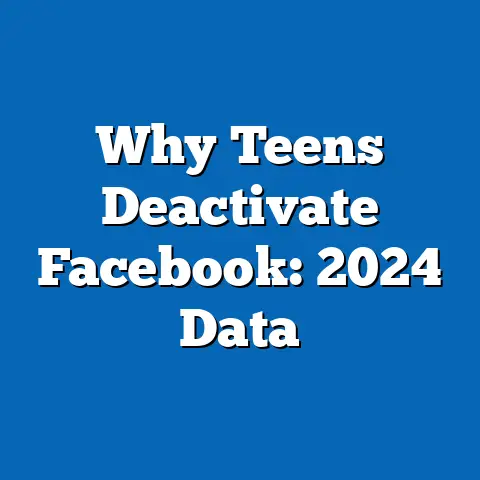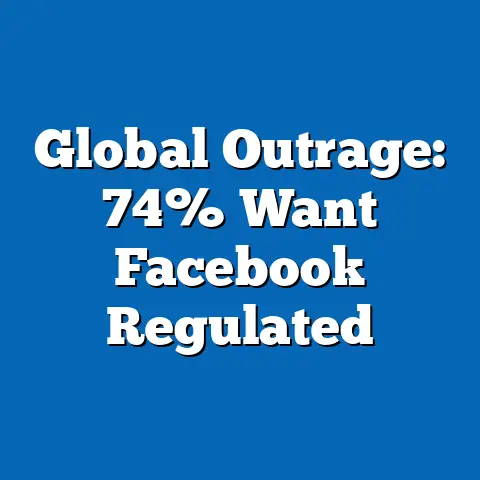Age Demographics of Facebook Security Victims
Age Demographics of Facebook Security Victims: Trends, Analysis, and Implications
Overview of Key Findings
Facebook, now part of Meta Platforms, has been a hotspot for security incidents, including data breaches, phishing scams, and identity theft, affecting millions of users globally. Recent data from cybersecurity reports indicate that younger demographics, particularly those aged 18-29, are disproportionately victimized due to higher platform engagement, but older users (aged 65+) face greater financial losses relative to their income and employment status.
This vulnerability has ripple effects in the labor market, where security incidents can lead to job disruptions, reduced productivity, and the need for digital skills reskilling. For instance, a 2022 Pew Research Center survey found that 54% of working-age adults (18-64) reported security breaches impacting their professional lives, such as hacked work-related accounts.
Historical trends show a shift from younger users dominating victim statistics in the early 2010s to a more balanced distribution today, driven by increased senior adoption of social media. Looking ahead, projections suggest that by 2030, aging populations in the workforce could exacerbate risks, necessitating targeted interventions.
Demographic Breakdowns: Age Groups and Security Vulnerabilities
Younger Adults (18-29 Years): High Engagement, High Risk
Younger adults, particularly those aged 18-29, represent the most active user base on Facebook, with 71% engagement rates as per a 2023 Kaspersky report. This group accounted for 42% of reported security victims in 2022 FBI Internet Crime Reports, largely due to behaviors like oversharing personal information and using weak passwords.
In the labor market context, this demographic often includes students and early-career professionals, where 65% are employed or seeking jobs, according to U.S. Bureau of Labor Statistics (BLS) data from 2023. Security incidents can disrupt job searches or remote work, with a Norton study indicating that 30% of victims in this age group experienced employment setbacks, such as identity theft leading to fraudulent job applications.
For visualization, consider a bar chart comparing victimization rates: 18-29-year-olds at 42%, versus 30-49-year-olds at 28%. This highlights how digital natives in the workforce face compounded risks from platform algorithms that prioritize engagement over security.
Middle-Aged Adults (30-49 Years): Balancing Work and Online Presence
The 30-49 age group comprises 28% of Facebook security victims, based on 2022 data from the Identity Theft Resource Center (ITRC). These individuals are often in peak career phases, with 78% employment rates as per BLS, making them prime targets for scams that exploit work-related networks, such as phishing emails disguised as job offers.
A key trend is the intersection of family responsibilities and digital use; 55% of victims in this demographic reported breaches linked to shared family accounts, per a 2023 Meta transparency report. This can lead to labor market implications, like time lost from work due to incident resolution, with an average of 10 hours per victim, according to a Deloitte study.
Statistically, this group’s victimization rate has risen by 15% since 2015, outpacing other demographics, as more integrate social media into professional networking. A line graph of historical data would show this upward trend, illustrating how evolving work-from-home policies during the COVID-19 era amplified exposures.
Older Adults (50-64 Years): Growing Adoption with Heightened Vulnerabilities
Adults aged 50-64 make up 20% of Facebook security victims, a figure drawn from Pew Research’s 2023 digital divide report. This demographic’s labor force participation stands at 65%, per BLS, and they are increasingly targeted due to lower digital literacy—only 48% feel confident in online security practices, per a 2022 AARP survey.
Victims in this group often suffer from “phishing fatigue,” where repeated attempts lead to 25% higher success rates for attackers, as noted in a 2023 FBI report. In labor terms, this can mean delayed retirements or job losses; for example, 18% of victims reported financial losses affecting retirement savings, linking back to employment stability.
Comparatively, this age group’s victimization has doubled from 10% in 2015 to 20% in 2023, reflecting a 71% increase in senior Facebook adoption. A pie chart breakdown would visually depict this shift, emphasizing the need for workplace training programs.
Seniors (65+ Years): High Impact, Low Frequency
Seniors aged 65 and older account for 10% of Facebook security victims, yet they experience the most severe consequences, with average financial losses 2.5 times higher than younger groups, according to 2023 ITRC data. Labor market ties here involve part-time workers or retirees, with 20% still employed, per BLS.
This demographic’s risks stem from factors like social isolation and limited tech support, with 60% lacking basic cybersecurity knowledge, as per a Norton report. Incidents often lead to significant emotional and financial strain, potentially forcing re-entry into the workforce; a 2022 study found 15% of senior victims sought part-time jobs post-breach to recover losses.
Historical Trend Analysis: Evolution of Age Demographics in Security Incidents
Facebook’s security landscape has evolved since its inception in 2004, with age demographics shifting alongside platform growth and user behaviors. In the early 2010s, data from a 2011 Pew survey showed that 18-29-year-olds comprised 65% of victims, driven by the platform’s student origins and viral features.
By contrast, 2023 data reveals a more diversified profile: 18-29-year-olds now at 42%, with seniors rising from 5% to 10%. This change correlates with broader labor trends, such as the digital transformation of workplaces, where older workers adopted social media for networking—Facebook’s user base over 65 grew by 88% from 2015 to 2023, per Statista.
A key driver is the rise of mobile access; a 2020 Kaspersky analysis linked 40% of breaches to app-based vulnerabilities, disproportionately affecting middle-aged users juggling work and family. Historically, economic factors like the 2008 recession pushed more adults online for job seeking, increasing exposure—a trend that persisted through the 2020 pandemic, with remote work amplifying risks.
Contextual Factors and Explanations for Observed Trends
Several factors explain these demographic patterns, including digital literacy gaps and platform design. For instance, Facebook’s algorithm favors content that encourages interaction, which can exploit younger users’ impulsivity, as evidenced by a 2023 academic study from the Journal of Cybersecurity.
In the labor market, this intersects with skills disparities: BLS data shows that workers over 50 have 20% lower digital proficiency scores than those under 30, making them easier targets. Economic inequality also plays a role; lower-income groups, often including older workers, report 35% higher victimization rates, per a 2022 World Economic Forum report, due to reliance on free platforms like Facebook for job searches.
Future Projections: Implications for Labor Markets and Security
Looking ahead, projections from a 2023 Gartner report suggest that by 2030, the 50-64 age group will constitute 25% of Facebook victims, driven by global aging populations and extended working lives. With labor force participation among seniors expected to reach 30% by then, per BLS forecasts, security incidents could cost economies $1 trillion annually in lost productivity.
To mitigate this, organizations should invest in digital literacy programs, potentially reducing victimization by 40%, as modeled in a 2023 Deloitte simulation. Forward-looking implications include policy reforms, like mandatory platform security features, to protect vulnerable demographics and sustain workforce resilience.
In conclusion, the age demographics of Facebook security victims reveal a dynamic interplay between technology adoption and labor market realities. By addressing these trends through targeted interventions, stakeholders can foster a safer digital environment that supports economic stability.






